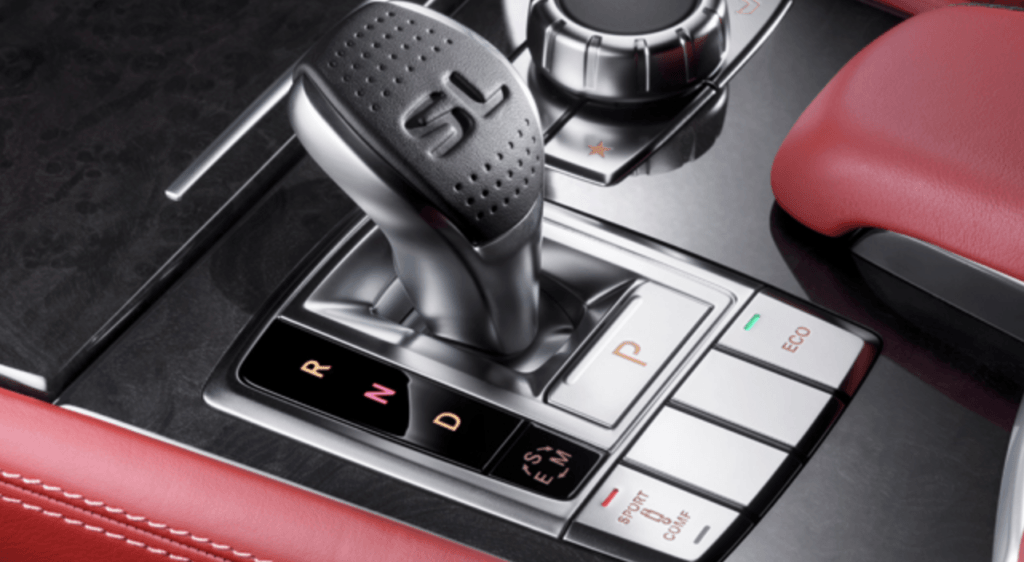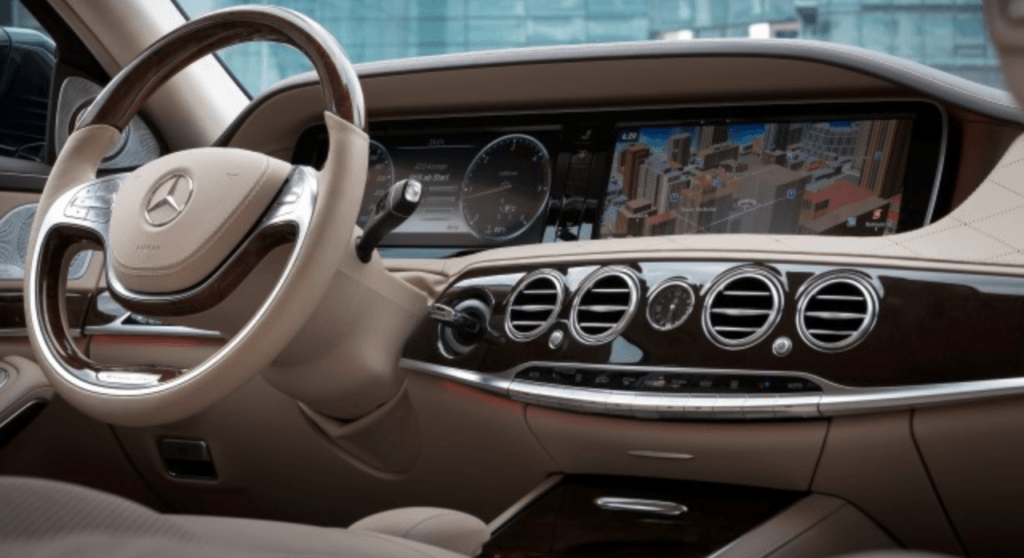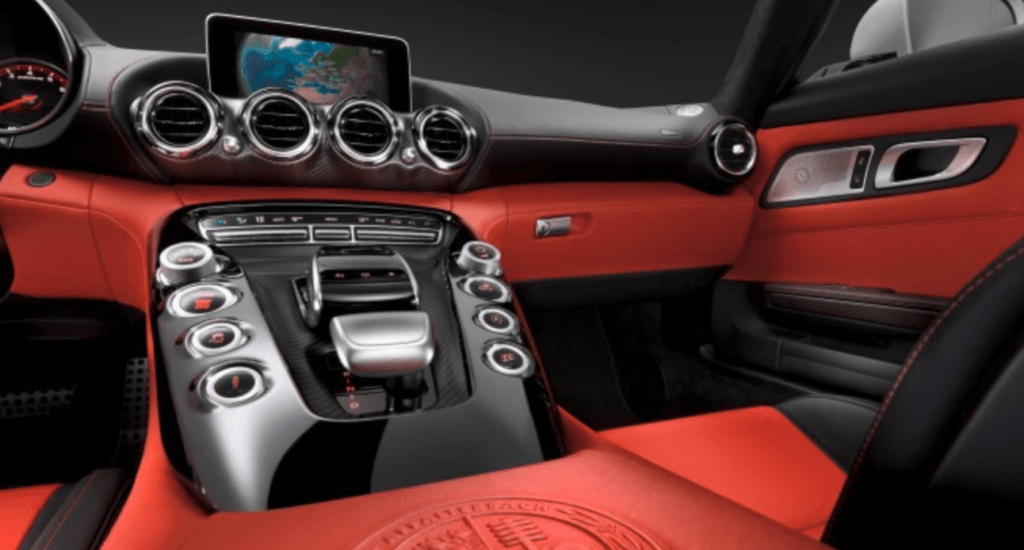The Benefits of Additive Manufacturing at BIA

This paper discusses the benefits of additive manufacturing for a German automobile manufacturing plant, which include reducing manufacturing lead times and increasing percentage of bids won from OEMs.
BIA is a German plastics and plating manufacturing company that produces chrome detailing for the automobile industry. They are a Tier 2 supplier to major German original equipment manufacturers (OEMs), including BMW, Audi, Porsche, and Volkswagen[1], and focus largely on manufacturing interior buttons for dashboards and centre consoles. See Exhibit 1 for examples of their product line. The company has 1040 employees at its Solingen, Germany plant and operates two shifts of injection molding machines in batches and four chrome plating lines in continuous flow. BIA’s initial production flow diagram is seen below:
The total time required from idea conception to delivery of final parts to the customer can take up to 40 weeks. In an industry that relies heavily on quick deliveries and modifications, every week counts. Therefore, to increase plant efficiency, BIA has introduced additive manufacturing to its design process to turn its previously serial process flow into a parallel flow. Rather than waiting for the FOT parts to be produced (27 weeks after initial design concept), engineers can create prototypes of the parts using additive manufacturing and give them directly to the plating rack manufacturer (see Exhibit 2 for a photo of a plating rack). This addition of 3D printed prototypes results in lead time reduction by six weeks and gives BIA a big advantage during the bidding process for new projects. The updated flow diagram follows:

The first machine the company purchased used old additive manufacturing technology that was difficult to use and often broke down, standing idle until a service representative visited the plant and repaired it. The concept was good, but in practice it was hardly used because of the inconvenience it provided to the engineers. Additive manufacturing has evolved drastically in the past decade, starting initially as a means for rough prototypes due to the inferior quality levels it produced.[2]
The short-term solution was to upgrade their machinery, which involved visiting additive manufacturing trade fairs in Germany, such as the Hannover Messe’s additive manufacturing event[3]. A new machine with decreased printing time and the latest 3D printing technology (including multi-color printing in Acrylonitrile Butadiene Styrene ABS) was purchased, giving the engineers a more reliable way of creating prototypes early on in the process.
The chrome plating process at BIA works by dipping Polycarbonate (PC) plastic parts into various chemical bathes that form thin layers of chrome metal on the parts. The process relies heavily on having a smooth surface, and only works with PC plastic.
Although having the current ABS prototypes improves project lead times, BIA would like to take it one step further by finding an additive manufacturing supplier to create high-quality PC prototypes. By having prototypes in PC, BIA would be able to test the plating racks in the chemical baths while the steel tool manufacturing is still ongoing. This would save another two weeks in the production process, which would be greatly beneficial to the company both in saving time and winning more bids from the OEMs. The updated flow diagram can be seen below:
Until a machine is made that fits the specific requirements of this chrome plating company, BIA should be on the lookout to partner up with research laboratories or universities that program and design additive manufacturing equipment. BIA is a relatively small-scale chrome plating plant, but the industry itself is rather large. By creating a 3D printer with the high levels of tolerance and material selectivity that the chrome plating industry requires, many other companies across the industry would benefit.
BIA is a German plastics and plating company that uses additive manufacturing to run parallel processes, currently saving them up to six weeks of lead time. The leaps and bounds in technology that the 3D printing industry has experienced has had its effects on the company, as machines that were purchased quickly become outdated. Nonetheless, the current printer seems to be addressing the speed, convenience, and reliability issues that were present with the old machine. Looking forward, would it be easier and less expensive for BIA to outsource their 3D printing needs to companies with a far superior grasp of the technology being used? And in the very long term, can the use of additive manufacturing one day replace the entire manufacturing process (rather than the current injection molding process)?
Exhibit 1 BIA’s line of interior chrome plated parts
Exhibit 2 Chrome plated parts hanging on the green plating rack and being processed through the plating baths.
[1]BIA Die Oberfläche, “References,” https://www.bia-kunststoff.de/index.php/en/references, accessed November 2018.
[2] Holwef. The limits of 3D printing. Harvard Business Review Digital Articles (June 23, 2015).
[3]Hannover Messe. “Design Knows No Limits,” https://www.hannovermesse.de/en/news/key-topics/additive-manufacturing/ , accessed November 2018.
(777 words)








Thank you for a very interesting and insightful article. While it is expensive for BIA to do 3D printing in-house, I do believe that vertical integration will set BIA apart from their competitors. The more they can bring in-house, the more they can build up capabilities in this type of technology and manufacturing and one day go on to replace parts of the process with additive manufacturing. For this reason, I don’t think they should outsource 3D printing to another company; perhaps they can partner with them in the short-term to learn more, but in the medium-term, they should continue to do this in-house and build up the additive manufacturing capability.
I completely agree that nowadays additive manufacturing generates important benefits to manufacturing companies in the automobile industry as well as in other industries and will continue increasing its impact in the following years. In the future I believe that additive manufacturing will be extended to the entire manufacturing process, but to do that it will be necessary to improve the current technology and invest in talent. In the one hand, nowadays the low production speed of additive manufacturing is a key restriction for the application of the technology in plants with a big production volume. On other hand, if the technology improves, companies will have to hire and train employees that will be able to understand and control the machines [1].
Since the future of the processes in an automobile manufacturing factory will be based in additive manufacturing, I believe that companies should develop R&D in-house, since it can be a competitive advantage. They should use the best technologies existing in the market, but at the same time develop their own additive manufacturing technology with focus in their particular needs.
[1] Deloitte University Press, “3D opportunity in automotive industry,” https://www2.deloitte.com/content/dam/insights/us/articles/additive-manufacturing-3d-opportunity-in-automotive/DUP_707-3D-Opportunity-Auto-Industry_MASTER.pdf, accessed on November 2018.
Thank you for this insightful essay. I think issue of whether to outsource or vertically integrate is an important one, especially since it will likely shape the company’s suite of competitive advantages that are key to marketshare. This will be especially critical as experts project 3D printing in the automotive space to be a $8B business by 2024 so rapid adoption and change area likely (https://globenewswire.com/news-release/2018/08/27/1556805/0/en/3D-Printing-in-Automotive-Market-to-cross-8bn-by-2024-Global-Market-Insights-Inc.html). Before BIA jumps blindly on the bandwagon, I think there are two key challenges they need to consider.
1. BIAs Ability To Invest: What is BIAs ability to tolerate PP&E costs associated with buying rapidly outdated machinery? Will the depreciation present tax breaks that offset the costs? Is there any regulations that need to be considered (tax credits?) Does the company have enough EBIT to support these sorts of continuous investments? How long do experts forecast until the industry reaches a relative steady state?
2. The Costs of Outsourcing: What are the costs and advantages to BIA of having another supplier? Will this lead to further coordination problems? Will the mark-up BIA now has to pay be worth the upside?
I think exploring and answering these overall questions will be key. While it is difficult to speak to the company’s specific financials (a google search could not produce them), market research suggests that many companies are developing their in-house 3D printing capabilities (https://www.forbes.com/sites/louiscolumbus/2018/05/30/the-state-of-3d-printing-2018/#113f2a5e7b0a). This may make it prudent for BIA to keep these tech in house, but the final decision will need to take into consideration how they answer the questions posed above.
Jane, I found this post really insightful. Savings six weeks of lead time over a normally forty week long process through additive manufacturing is encouraging data on the future and adoption of the technology as a whole.
To your question, when deciding whether to outsource to third parties versus building in-house, I would do a cost-benefit analysis but also think about how the following factors affect the decision in the long term:
(1) Is R&D a core capability of BIA? By browsing BIA’s website, it seems like the company already invests a lot in innovation.
(2) Connected to the above, will there be synergies with the current resources (both human capital and machines) when allocating efforts to additive manufacturing?
(3) When outsourcing, is there a risk that specific knowledge will be shared to competitors through suppliers?
Perhaps, as HeartyHarvard shared, there might be benefits of outsourcing in the short term while 3D printing machines quickly become obsolete as the technology progresses.
Thank you for the great article! Undoubtedly, additive manufacturing already plays a big role in the automotive manufacturing process and is expected to be central in the industry in the future.
Regarding your concern relevant to outsourcing vs developing in-house capabilities, I agree with the answer above that we should examine the company’s investment abilities as well as the cost of outsourcing.
Given the lack of this information my thoughts are the following: The 3D printing industry is still booming with huge performance and output quality improvements being achieved every year. Thus, I would avoid investing now on such a machine and instead I would try to temporarily team up with an external partner for some years. When, in turn, a slowdown in the technology’s improvement will be noticed, I would start developing internal capabilities.
Thank you for this article – it is indeed very valuable to see how much more efficient the process can be with additive manufacturing. Saving 6 weeks in lead time, in an industry where timeliness and speed are key to success, makes additive manufacturing very attractive to BIA.
However, as you mentioned – is it worth investing in internally, given the size of the company? Or would it be better to let companies specialize in additive manufacturing of all kinds, and then contract these specialized companies?
The only risk I see in doing this is that the company might lose its competitive advantage, especially if there is a risk that the entire process be replaced by additive manufacturing.
This is a really interesting article. While reading the article, I also thought about the chance of eventually a 3D printer being able to replace the entire manufacturing program. I believe one day it will. As the technology advances new materials will be able to be used. I also agree with you that it would be a great idea for them to partner up with universities to try to advance this technology to their needs. I wonder however, what would be the cost difference between a entire piece being made by a 3D Printer and one made by the traditional manufacturing line. Regarding outsourcing their 3D printing needs to others companies, I don’t believe it to be great idea, since they are likely going to increase their cost to produce the prototype and generate coordination problems.